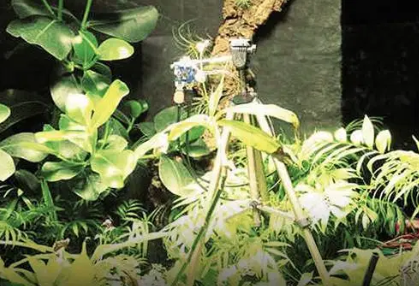
At the London Zoo, a fern has started taking its own selfies, the Zoological Society of London (ZSL) announced on Tuesday. ZSL scientists had laid the groundwork for the feat earlier this year, with the ultimate aim of using plants to power camera traps and sensors in the wild. This they achieved by installing microbial fuel cells in Pete, a maidenhair fern.
Microbial fuel cells are devices that use bacteria as the catalysts to oxidise organic and inorganic matter and generate current. A research paper from the Massachusetts Institute of Technology earlier this year explained that electrons produced by the bacteria are transferred to the negative terminal and flow to the positive terminal.
In a statement on the ZSL website, Conservation Technology Specialist Al Davies explained: “Plants naturally deposit biomatter as they grow, which in turn feeds the natural bacteria present in the soil, creating energy that can be harnessed by fuel cells and used to power a wide range of vital conservation tools remotely, including sensors, monitoring platforms and camera traps.”
Among conventional power sources, batteries must be replaced while solar panels rely on a source of sunlight. On the other hand, plants can survive in the shade, naturally moving into position to maximise the potential of absorbing sunlight.
The ground-breaking solution was enabled by ultra low-powered technology created by US AI company Xnor.ai. It works around the clock on any device while consuming such low energy that it can be powered by a small plant.
Pete’s delicate leaves and shiny stalks are clearly visible in the images. “Pete has surpassed our expectations and is currently taking a photo every 20 seconds – he’s been working so well we’ve even accidentally photobombed him a few times!” Davies said.